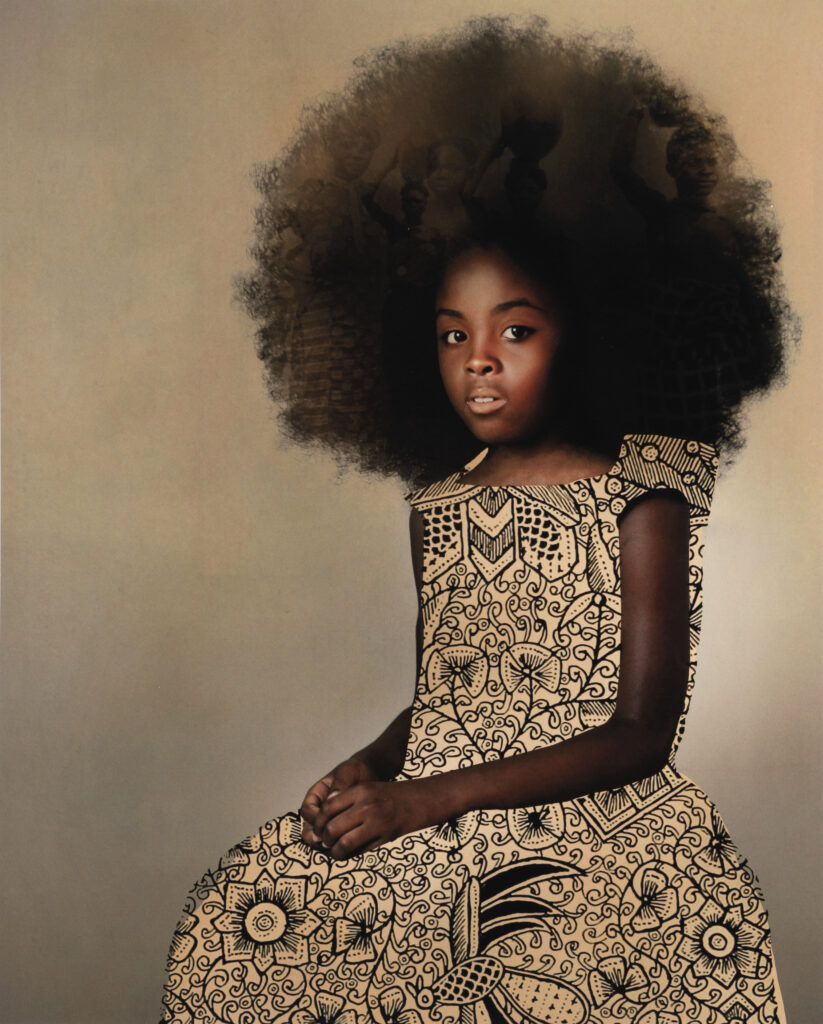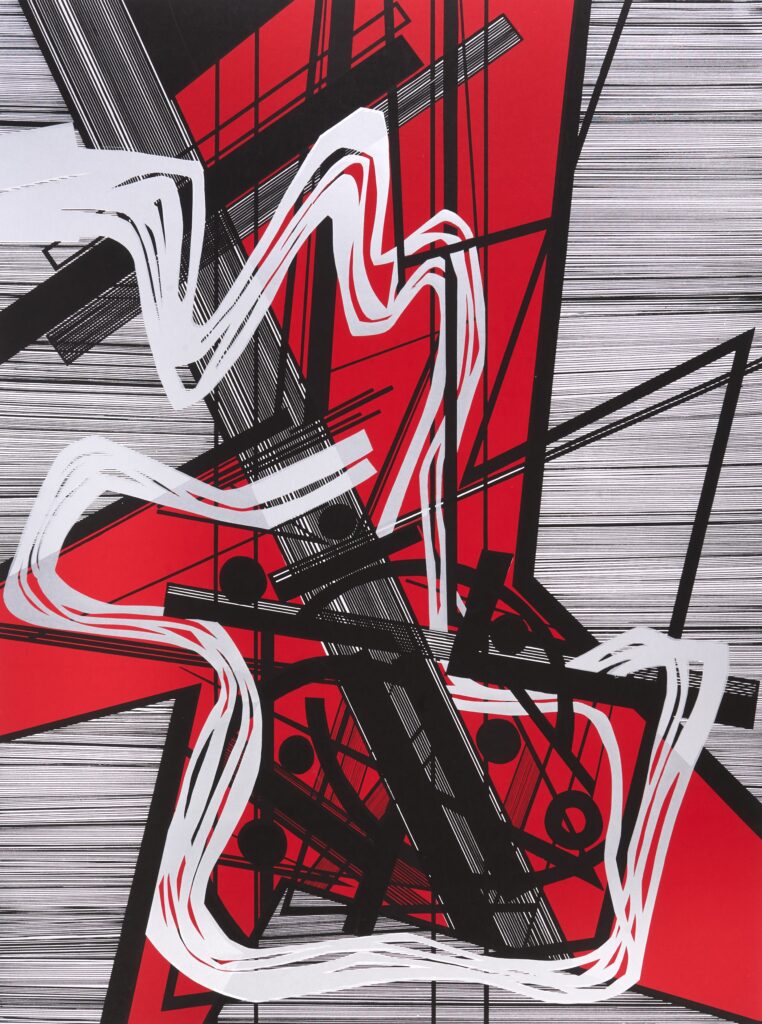Selections from The Petrucci Family Foundation Collection of African American Art.
Hunterdon Art Museum
May 18 2025 – August 31, 2025

Selections from the Petrucci Family Foundation Collection of African American Art
The eight works in this exhibition are on loan from The Petrucci Family Foundation, which began to collect the works of Black Artists in 2012 in “the belief that we cannot truly understand American history without understanding African American history.” The collection now includes more than 500 works of art in all media. Based in Asbury, New Jersey, the Foundation’s mission is to support education and create opportunities for Americans at every stage and station of life.
While the artists in this exhibition incorporate varying themes, techniques, and materials, the works in this exhibition have found common ground. Each work focuses on children as the subject and each tackles the creative process in unique ways. Not content to use photography, painting, printmaking or collage traditionally, the artists innovate, developing work that is arresting and beautiful while also making profound statements.
Katrina Andry brings a slave revolt in 1811 into the present. She depicts her son with a lit match, referencing an attempt to burn down plantations. Andry raises questions about what would have happened had the revolt succeeded. Lavett Ballard incorporates photographs of women from the African diaspora and uses fences as symbols of the barriers they face. Tawney Chatmon manipulates photographs, often exaggerating the subjects’ hair, changing their eyes, and elongating their bodies.
She embellishes with paint and mixed media, recalls the Byzantine period, and adds ornate frames to create a sense of importance. Tokie Rome-Taylor investigates ethnography, identity, history, and memory in her work, and in the series shown here, explores the legacy of plants that were and are still used by her ancestors for medicinal and spiritual purposes. On preserved tobacco and other indigenous leaves, Accra Shepp presents photographic portraits of those who worked the crops and farmland. All the works in this exhibition reference the African American experience while drawing upon the artists’ distinctive styles.
Featured Artists include:
- Tokie Rome-Taylor
- Accra Shepp
- Katrina Andry
- Tawny Chatmon
- Lavett Ballard
For more information, visit the Hunterdon Art Museum website.
Image: PFF367 – Tawny Chatmon, Deeply Embedded / Thoroughly Rooted, 2016
Paris Noir: Artistic circulations and anti-colonial resistance, 1950 – 2000 Duet: Jazz & Abstract Art
Centre Pompidou
March 19, 2025 – June 30, 2025

From the creation of the Présence Africaine review to that of Revue noire, “Black Paris” retraces the presence and influence of Black artists in France from the 1950s to 2000. The exhibition celebrates 150 artists coming from Africa, the Americas and the Caribbean, whose works have often never been displayed in France before.
“Black Paris” offers a vibrant immersion in a cosmopolitan Paris, a place of resistance and creation that gave rise to a wide variety of practices, from a new awareness of identity to the search for trans-cultural artistic languages. From international to Afro-Atlantic abstractions via surrealism and free figuration, this historical voyage reveals the importance of artists of African descent in the redefinition of Modernisms and Post-modernisms.
Four installations produced especially for the exhibition by Valérie John, Nathalie Leroy Fiévee, Jay Ramier and Shuck One punctuate the visit and provide contemporary insights into this memory. At the centre, a circular matrix takes up the motif of the Black Atlantic, the ocean as a disk, a metonymy of the Caribbean and the “Whole-World”, to use the term coined by Martinican poet Edouard Glissant, as a metaphor for the Parisian space. Attentive to circulations, networks and friendships, the exhibition proposes a living and often entirely new map of Paris.
This exhibition includes five works from the Petrucci Family Foundation Collection of African American Art by artists who were either influenced by or had an impact on the Parisian art world. These artists are Avel de Knight, Bill Hutson, Haywood Rivers, and Mavis Pusey.
For more information, visit the Centre Pompidou Website.
Image: PFF410 – Mavis Pusey, Paris Mai-Jun 68, 1968
American Duet: Jazz & Abstract Art
Bellagio Gallery of Fine Art
November 15, 2024 – January 4, 2026

Jazz transcends the boundaries of music. Its spontaneous, vibrant form is built on decades of adaptation. Evolving from blues and ragtime in the African American community, jazz was born of Creole and African traditions in New Orleans, Louisiana in the late 19th century. A uniquely American genre, jazz maintains the core elements of improvisation, rhythm, harmony, and form.
Abstract art, alongside jazz, rose to prominence in the United States during the 20th century. Transplanted from Europe by artists fleeing the political unrest of World War II, abstract art began to emerge in New York City in the 1930s – 40s. By the mid-century, it took the American art world by storm, and Abstract Expressionism was born as a distinctly American style. Abstract art is a formal exploration that uses shape, color, form, and gestural marks to produce visual compositions free from the constraints of realism. By subverting the value of representation, abstract artists created their own visual languages independent of conventional constraints. African American musicians and artists, at the vanguard of both jazz and abstract art, took control of societal perceptions through their work.
Countless visual artists were inspired by jazz music—listening in the artists’ studios, befriending musicians, playing music, and painting and drawing in jazz clubs. A dialogue developed between the expressive visual language of the abstract artist and the complex rhythmic compositions of the jazz musician. Jazz incited artists to translate sound to color, note to line, and silence to void.
This exhibition surveys 61 works by 34 modern and contemporary artists in the Petrucci Family Foundation Collection of African American Art who were influenced by jazz or used its core elements within their work.
For more information, visit the Bellagio website.
Image: PFF259 – Herbert Gentry, Carnival, 1984